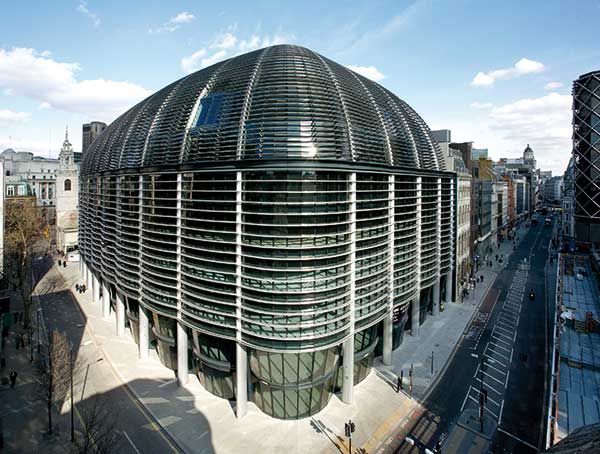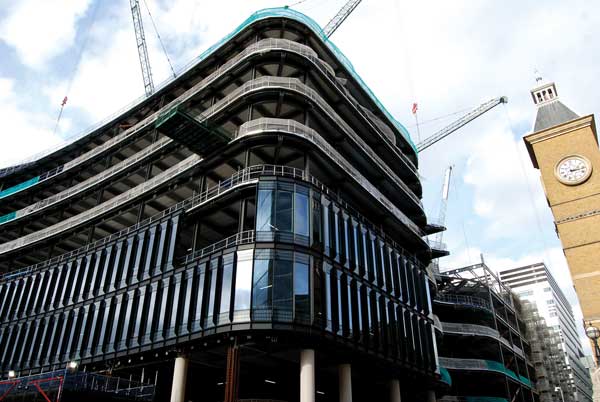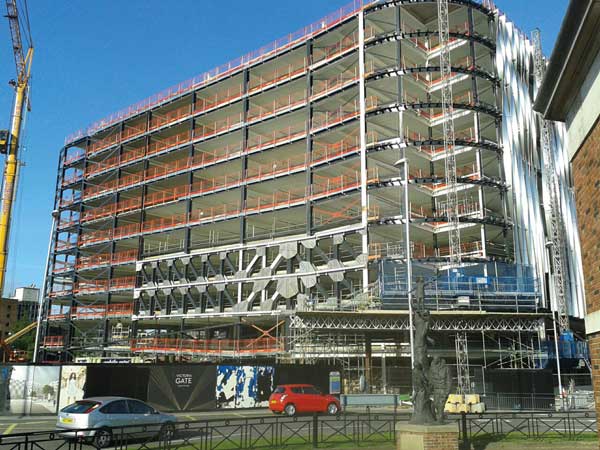SSDA Awards
SSDA Commendation: The Walbrook Building, London
 Incorporating some large open trading floors, the Walbrook marks the latest in design development of office buildings for the City of London.
Incorporating some large open trading floors, the Walbrook marks the latest in design development of office buildings for the City of London.
Architect: Foster + Partners
Structural engineer: Arup
Steelwork contractor: William Hare Ltd
Main contractor: Skanska UK Plc
Client: Minerva Ltd
Built on a City of London site directly opposite Cannon Street Station, the 10 storey Walbrook Building is an L shaped structure providing 3,693m² of retail space and 35,283m² of office floorspace.
The project required more than 6,000t of structural steelwork and is located within the height limitation band imposed by the nearby St Paul’s Cathedral.
The structure consists of steel columns and beams with composite floor slabs cast in situ on metal decking, with cellular beams used extensively throughout to accommodate services.
In order to create the desired open plan column free spaces, the steelwork is based around a 9m grid pattern, with only 10 internal columns on a typical floor plate.
“The floor plate, driven by the need to create space for the broadest range of occupiers, resulted in the use of long span cellular beams throughout the structure,” says Darren Burnham, William Hare Engineering Quality Manager.
The project team agrees that the most challenging and complex part of the job was the sloping columns that rake inwards, mansard style, up the building’s elevations from the sixth floor to the roof.
Below the sixth floor the steel frame is based on a relatively simple layout, but above this floor level the members crank in multiple locations. This results in some complex nodes with members clustered at awkward angles.
“The geometry was very challenging as every column above floor six is cranked at a different angle to allow for the creation of a seamless cladding envelope,” says Joanne Larmour, Arup Associate.
The unconventional framing pattern on the upper levels meant careful consideration was needed to provide temporary stability for the steelwork above the sixth floor.
“Normally temporary works are left to the steelwork contractor, but the unique characteristics of this job meant we agreed the best approach with the engineer, Arup,” explains Mr Burnham. “They provided temporary loads from the framing model, and an agreed strategy was developed which included additional in-plane and vertical bracing.”
Another important consideration for the temporary works was to provide support to the atria beams. Architect Foster + Partners wanted to ensure a clean finish without visible bolts, so all joints were site welded.
The overall cost of the site welding scheme was reduced by pairing up the temporary support beams so that they could also support a temporary works platform, avoiding the need for separate scaffold towers.
The topmost level (roof) design was further complicated by the provision of a Building Maintenance Unit (BMU) which had to cantilever over the curved façade of the building.
“The unusual shape of the building required a bespoke BMU for façade cleaning. It is supported at roof level and imposes significant forces on the roof structure. The interface of the BMU rails and loading on the already complicated roof geometry required a high degree of analysis incorporating many load cases, thus ensuring all eventualities were addressed,” says Ms Larmour.
In summary, the judges say the project further developed steelwork’s capabilities for offices.













